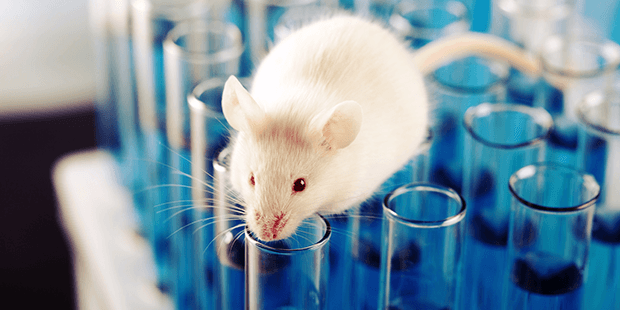Pharmaceutical R&D Services
One-Stop Shop for Stroke Drug Development and Preclinical Studies
Our services include the advancement of basic stroke research, experimental modeling and preclinical drug studies, providing researchers with a comprehensive platform to develop new therapies.
Get an Instant Quote Now
What Are the Current Pain Points in Stroke Drug Development?

- Acute ischemic stroke treatments are limited and ineffective.
- Lack of fast-acting medications for post-stroke depression (PSD) and anxiety (PSA).
- Multicenter structure leads to heterogeneity in preclinical studies.
- Uncertainty about stem cell therapy in stroke treatment.
- Lack of validated biomarkers.
- Blood-brain barrier penetration challenges, where drugs need to overcome the blood-brain barrier to effectively reach brain lesions.
- Drug toxicity and safety issues.
These pain points suggest that despite some promising research and drug candidates, stroke drug development still faces significant challenges and requires further research and innovation to overcome existing barriers.
What Preclinical Work Is Needed for the Development of Stroke Therapies?
What Are All the Molecular Types of Stroke Drugs?
| Small-Molecule Antiplatelet Drugs |
|
| Neuroprotective Peptides | |
| Monoclonal Antibodies for Stroke | |
| Neuroprotective Agents Against Stroke |
|
| Stroke Thrombolytics |
|
| Anticoagulant Drugs for Stroke |
|
| Stem Cell-Based Therapy |
These drugs play an important role in the treatment of different types and stages of stroke. We can provide customized therapeutic development services for stroke treatment based on your experimental needs.
Find the Right Comprehensive Stroke Models for Your Study

Mouse Models
Transient MCAO (tMCAO) in mouse
Permanent MCAO (pMCAO) in mouse
Photochemically-induced stroke mouse model

Rat Models
Transient MCAO (tMCAO) in rat
Permanent MCAO (pMCAO) in rat
Photochemically-induced rat stroke model
Endothelin-1 (ET-1) induced ischemia stroke in rat

NHP Models
ET-1 induced MCAO model in NHPs
Cynomolgus MCAO model
Rhesus monkeys endovascular stroke model

Porcine Models
Porcine ischemic stroke model

Canine Models
Canine pMCAO model
Advantages of Our Stroke Model
-
Reliability
Our model depicts the most accurate and up-to-date representations of the human stroke state.
-
Precision
Our outcome tests designed specifically for stroke animal models can precisely assess critical aspects of the stroke state such as mood, cognition, sensorimotor deficits, learning and memory function.
-
Quality
Rigorous post-operative care protocols that maximize survival and increase the extent and duration of deficits
What Are All the Causative Factors That Lead to Stroke?
Stroke often occurs as a result of a combination of factors. These factors can interact with each other, gradually aggravating the condition and eventually leading to a stroke.

What Biomarkers Would You Like to Explore?
| Stroke-Related Protein Biomarkers |
S100 calcium binding protein B (S-100B), neuron-specific enolase (NSE), myelin basic protein (MBP), glial fibrillary acidic protein (GFAP) |
| Stroke-Related RNA Biomarkers |
ARG1, LY96, MMP9, CCR7, INPP5D, ITA4, NAV1, CREM, PELI1, ZAK, CD46, CCL2, IL8, LAG3, HLA-DQA1 |
| Stroke-Related Metabolite Biomarkers |
Glutamate, glutamine, phenylalanine, tyrosine, homocysteine, methionine, tryptophan, aspartate, alanine, proline, pyroglutamate |
| Stroke-Related Lipid Biomarkers |
Triglyceride-to-high-density-lipoprotein cholesterol ratio, lipoprotein (a), total cholesterol, low-density lipoprotein-cholesterol |
| Stroke Biomarker Panels |
In stroke, biomarker groups can provide information about atherosclerosis, thrombosis, inflammation, oxidative stress, endothelial damage, blood-brain barrier disruption, and cerebral ischemia. |
Potential Value of Biomarkers
- Potential for early diagnosis of stroke
- Distinguishing between ischemic and hemorrhagic stroke
- Predicting the risk of hemorrhagic conversion in ischemic stroke
- For personalized treatment
By integrating genomics, transcriptomics, proteomics and metabolomics, we help our clients to systematically reflect the complex pathophysiological processes of ischemic stroke, which helps to improve the accuracy of early diagnosis. For example, mass spectrometry has demonstrated high sensitivity and specificity in the discovery of metabolic and protein biomarkers associated with stroke, helping to reveal the metabolic changes in stroke.

Subscribe for More Information on Stroke Research
Whether you want to learn about advances in new drug development, pharmacodynamic modeling and evaluation, rapid-acting drug development, stroke mechanisms and treatment strategies, or stroke emergency and prevention research on stroke, subscribe to us.
Our Advantages
-

Professionals
Deep expertise and experience in vascular research and development.
-

Well-equipped
Our fully equipped laboratories have comprehensive capabilities from initial screening to candidate selection.
-

Customization
Flexible approach with easy access to our global network of specialized laboratories. State-of-the-art technology provides you with a fully customized service.
-

After Sales Service
Solving any problems or concerns that customers may have and ensuring the proper functioning of the product or service.
FAQs
How to Construct an In Vitro Model of the Blood-Brain Barrier (BBB)?
What Is the Difference Between Static BBB Models and Dynamic BBB?
What Are the Available Laboratory Animals?
What Are the Available Animal Models of Ischemic Stroke?
What Are the Usual Types of Neuroprotective Agents?
How to Improve BBB Efficiency in CNS?
Additional Links and Resources
-

Development of Stem Cell-Based Therapy for Stroke
Stem cell-based therapies for stroke aim to promote neurogenesis and replace lost neurons or protect surviving neurons to improve neurological recovery.
-

Therapeutic Antibody Development for Stroke
These molecules are primarily located on cell membranes or in the extracellular space, where they can be targeted by antibodies.
-

Small Molecule Drug Development for Stroke
Small molecules have been developed to interfere with the ischemic cascade, thereby attenuating thrombosis, ischemia-induced excitotoxicity, mitochondrial damage, and inflammation.





